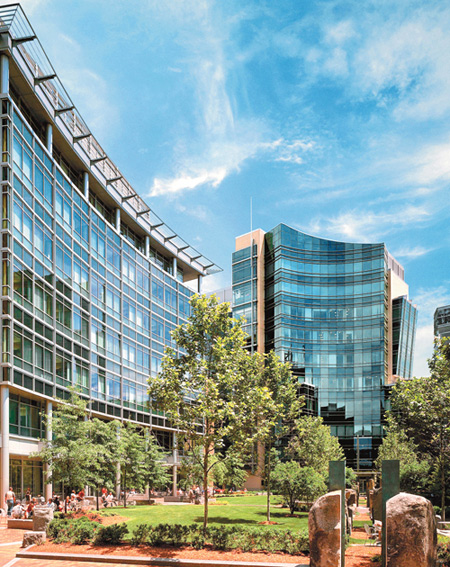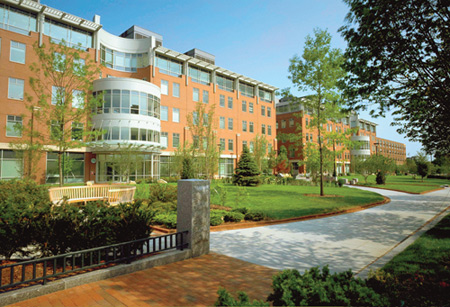Is Brown the New Green?
For example, recalls Calkins, "We had one of the first major traffic mitigation agreements in the country." This set standards for how much additional traffic could be created by the redevelopment and how it could be lessened by implementing programs to encourage commuting by bike, rideshare, or public transportation. The initiative has been fairly effective, reports Calkins, although he admits that research facilities have fewer people per square foot than office buildings, so less parking is needed to begin with for these types of buildings.
Originally the park was to focus on computer and defense-related technologies. But then, "the biotech industry popped its head and Cambridge got behind it," says Calkins. The city developed rules-such as regulations governing the use of hazardous chemicals in these buildings or those addressing the care of research animals-based on guidelines developed by the National Institutes of Health. Because their research and development work takes a long time, Calkins explains, biotech industries prefer locating in jurisdictions with understandable regulations already in place and not likely to change.
Forest City has now completed 2.3 million square feet of usable space on the original 27 acres. The mixed-use community includes 1.3 million square feet of R&D and office facilities; one hotel; five residential properties offering affordable, workforce, and market-rate units; and retail.
The development sits on land that was long ago created by filling in the salt marsh adjoining the Charles River with soil from elsewhere. Whether due to the source of the fill or the historic uses on this former industrial site, the existing soil has some lead and so, if removed, would have to be taken to a controlled disposal site. For this reason, and because the water table is only 9 feet below grade, Forest City opted to not build below grade in the park. Calkins notes that the environmental remediation for this project was conventional and any expenses for site-specific cleanup-such as removing old underground oil storage tanks and remediating the contaminated soil surrounding them-were built into the project's cost structure.
  |
The corporate headquarters and primary research facilities for Millennium: The Takeda Oncology Company, at MIT's University Park (Top); The University Park Common, an outdoor gathering space at University Park, doubles as a front lawn to twin buildings at 45/75 Sidney St. (Bottom) Photo © Bruce Martin (Top); Peter Vanderwarker (Bottom) |









